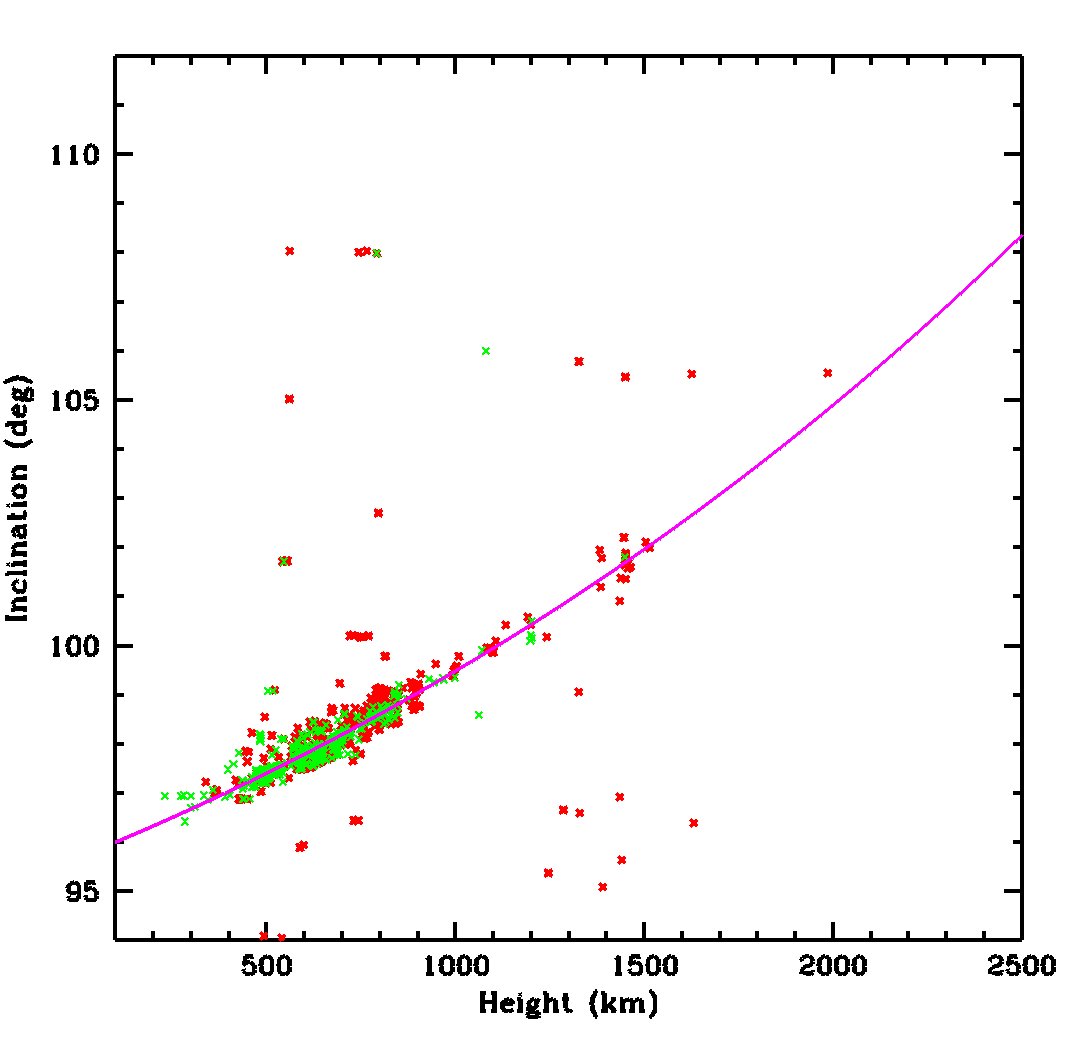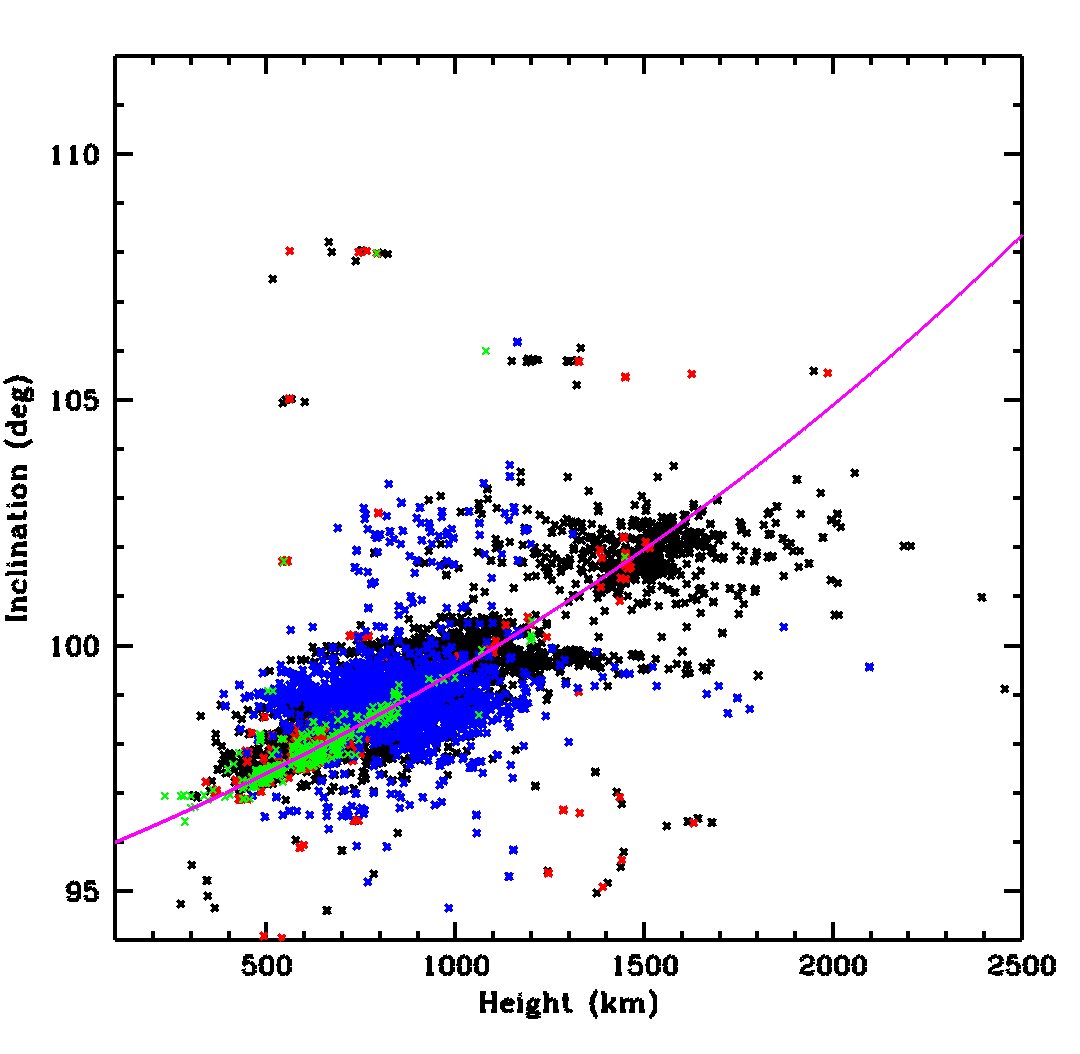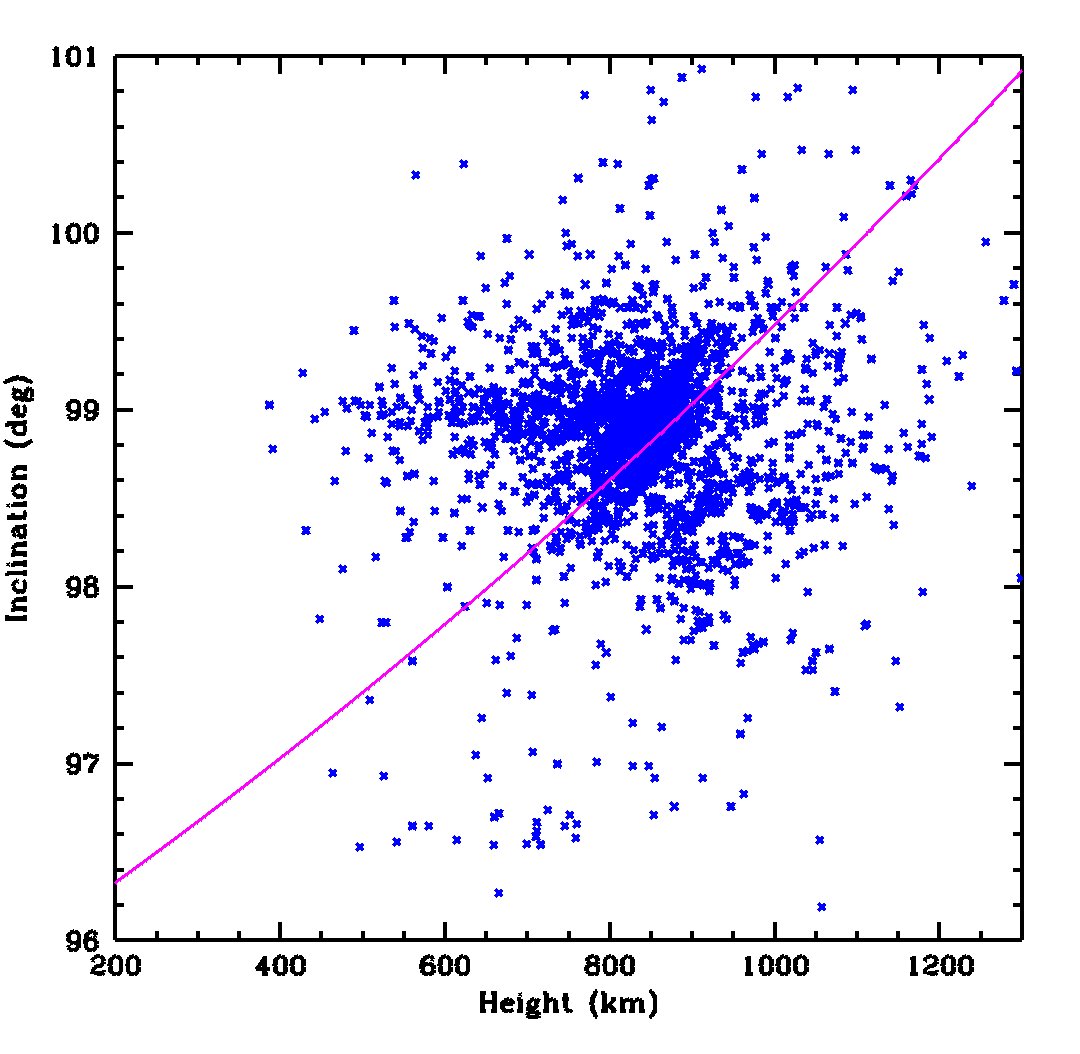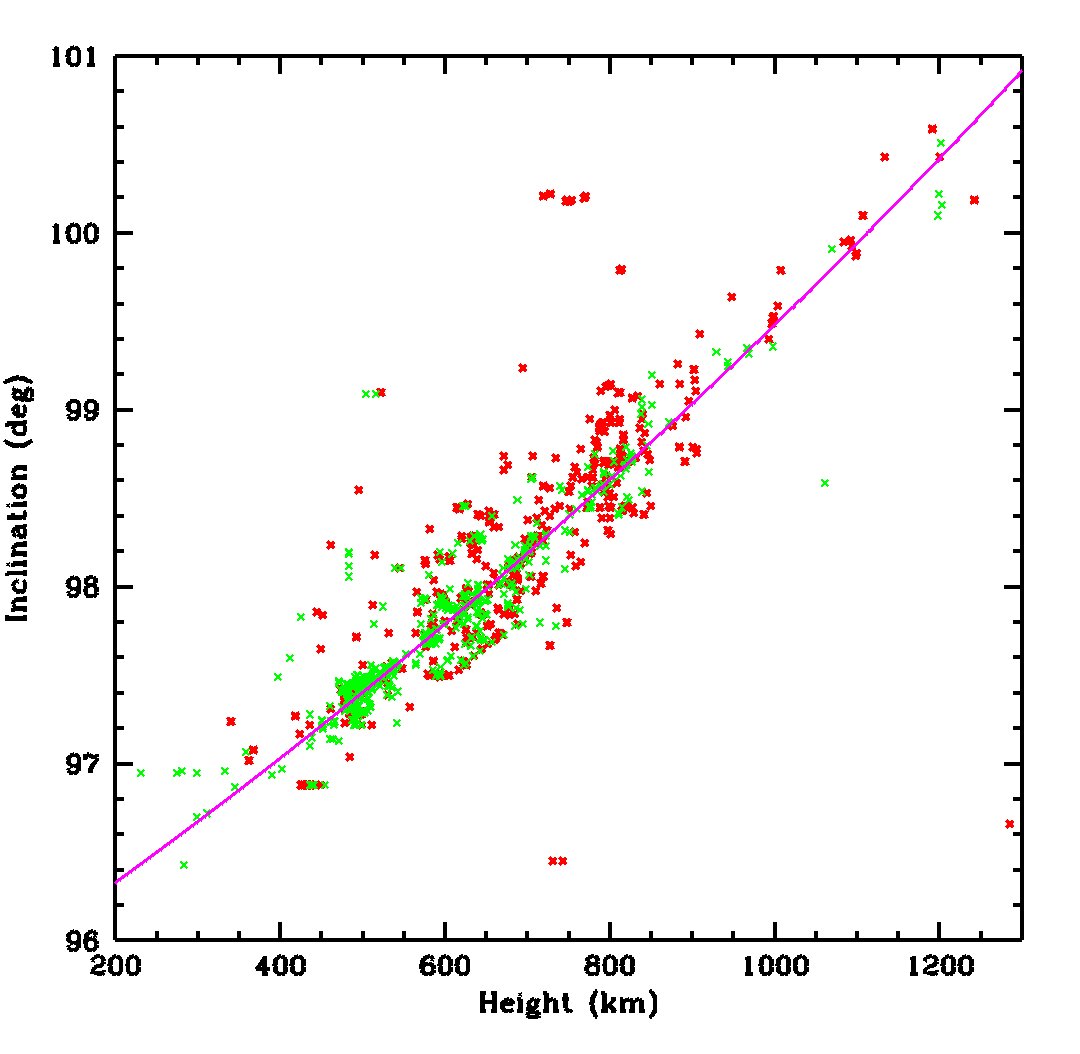Here are all the actual satellites in orbit in this range of heights and inclinations (green = working, red = dead). See how they are almost all right on the magenta SSO line. They are also almost all below 1000 km. The rest of the diagram is really empty of satellites! 

Now let's add in orbital debris. Generic orbital debris in black; debris from the 2007 Chinese antisatellite test in blue. You couldn't have picked a much worse region of orbital parameter space to make a big debris cloud. 

And here's the same zoom in region showing debris that is NOT from the Chinese ASAT, so they are not the only culprits. I think this debris is mostly from US rocket stages that disintegrated accidentally, but I'll have to dig deeper to check that. 

And for completeness, the debris that is from the Chinese ASAT, in the same zoomed-in part of orbital parameter space 

There are 2679 debris pieces in the plot from the ASAT. There are a comparable number, 2609 pieces, from other launches, all accidental breakups. Half of those pieces are from just 6 breakups:
455 pieces from the US NOAA 16 battery explosion in 2015
273 from the breakup of US rocket stage Agena 6231 in 1970
221 from the US DMSP F-13 battery explosiion in 2015
188 from the Chinese CZ-4B Y1 rocket stage in 2000
183 from Delta 111, 1991
149 from Delta 139, 1981
273 from the breakup of US rocket stage Agena 6231 in 1970
221 from the US DMSP F-13 battery explosiion in 2015
188 from the Chinese CZ-4B Y1 rocket stage in 2000
183 from Delta 111, 1991
149 from Delta 139, 1981
The Delta, Agena and CZ-4B stages are thought to have broken up due to residual propellant igniting many years after the stages were abandoned in orbit.
NOAA 16 and DMSP F-13 were respectively civil and military versions of the same weather satellite design which had a generic problem with exploding batteries (they are not the only cases, just the worst in SSO).
As a comparison I thought I'd show a different (but comparable size) region of parameter space, away from SSO. This is much emptier of active satellites except for the 51.6 deg inclination slot used by the ISS and related objects 

(Of course on every orbit the polar orbit satellites pass through the space occupied by the more equatorial ones - don't be misled into thinking that the orbit parameter space is the same as physical space)
• • •
Missing some Tweet in this thread? You can try to
force a refresh








